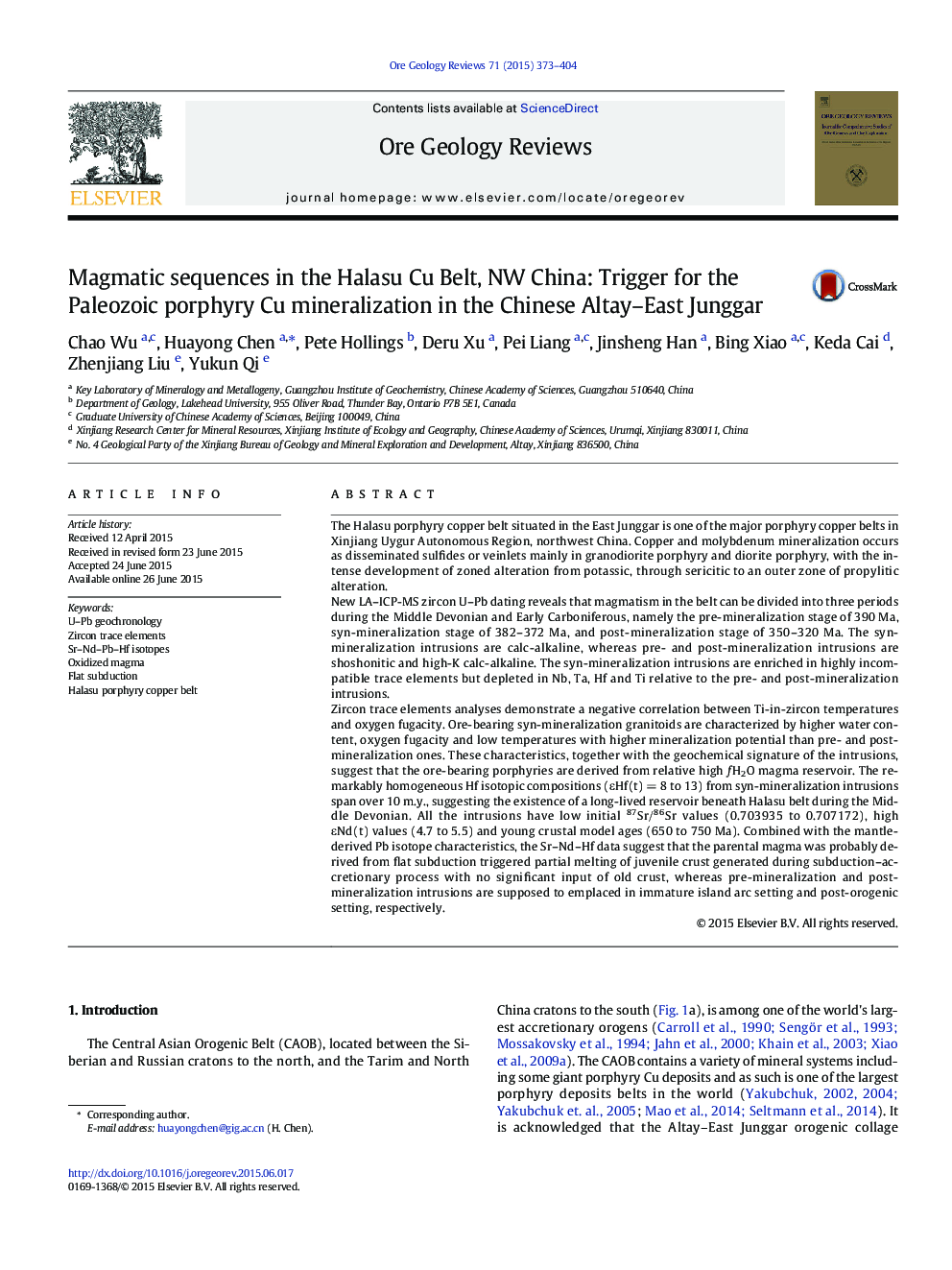| کد مقاله | کد نشریه | سال انتشار | مقاله انگلیسی | نسخه تمام متن |
|---|---|---|---|---|
| 4697026 | 1637233 | 2015 | 32 صفحه PDF | دانلود رایگان |

• The magmatism in Halasu belt is divided into three periods.
• The mineralization is associated with hydrous melt.
• The parental magma is derived from juvenile material dominated source.
• The hydrous magma is induced by flat subduction during the Late Paleozoic.
The Halasu porphyry copper belt situated in the East Junggar is one of the major porphyry copper belts in Xinjiang Uygur Autonomous Region, northwest China. Copper and molybdenum mineralization occurs as disseminated sulfides or veinlets mainly in granodiorite porphyry and diorite porphyry, with the intense development of zoned alteration from potassic, through sericitic to an outer zone of propylitic alteration.New LA–ICP-MS zircon U–Pb dating reveals that magmatism in the belt can be divided into three periods during the Middle Devonian and Early Carboniferous, namely the pre-mineralization stage of 390 Ma, syn-mineralization stage of 382–372 Ma, and post-mineralization stage of 350–320 Ma. The syn-mineralization intrusions are calc-alkaline, whereas pre- and post-mineralization intrusions are shoshonitic and high-K calc-alkaline. The syn-mineralization intrusions are enriched in highly incompatible trace elements but depleted in Nb, Ta, Hf and Ti relative to the pre- and post-mineralization intrusions.Zircon trace elements analyses demonstrate a negative correlation between Ti-in-zircon temperatures and oxygen fugacity. Ore-bearing syn-mineralization granitoids are characterized by higher water content, oxygen fugacity and low temperatures with higher mineralization potential than pre- and post-mineralization ones. These characteristics, together with the geochemical signature of the intrusions, suggest that the ore-bearing porphyries are derived from relative high ƒH2O magma reservoir. The remarkably homogeneous Hf isotopic compositions (εHf(t) = 8 to 13) from syn-mineralization intrusions span over 10 m.y., suggesting the existence of a long-lived reservoir beneath Halasu belt during the Middle Devonian. All the intrusions have low initial 87Sr/86Sr values (0.703935 to 0.707172), high εNd(t) values (4.7 to 5.5) and young crustal model ages (650 to 750 Ma). Combined with the mantle-derived Pb isotope characteristics, the Sr–Nd–Hf data suggest that the parental magma was probably derived from flat subduction triggered partial melting of juvenile crust generated during subduction–accretionary process with no significant input of old crust, whereas pre-mineralization and post-mineralization intrusions are supposed to emplaced in immature island arc setting and post-orogenic setting, respectively.
Figure optionsDownload as PowerPoint slide
Journal: Ore Geology Reviews - Volume 71, December 2015, Pages 373–404